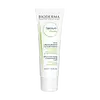What's inside
What's inside
 Key Ingredients
Key Ingredients

 Benefits
Benefits

 Concerns
Concerns

 Ingredients Side-by-side
Ingredients Side-by-side

Water
Skin ConditioningGlycerin
HumectantParaffinum Liquidum
EmollientPrunus Armeniaca Kernel Oil
MaskingSteareth-2
EmulsifyingButyrospermum Parkii Butter
Skin ConditioningSorbitan Caprylate
EmulsifyingSteareth-21
CleansingHydroxypropyl Starch Phosphate
Cera Alba
EmollientCetyl Alcohol
EmollientSimmondsia Chinensis Seed Oil
EmollientSodium Lactate
BufferingAllantoin
Skin ConditioningLactic Acid
BufferingMagnesium Sulfate
Manganese Sulfate
Skin ConditioningReseda Luteola Extract
Skin ConditioningArctostaphylos Uva Ursi Leaf Extract
Skin ConditioningCarum Petroselinum Extract
Skin ConditioningCera Microcristallina
Emulsion StabilisingDimethicone
EmollientParaffin
PerfumingPhenoxyethanol
PreservativePropylene Glycol
HumectantXanthan Gum
EmulsifyingCyclopentasiloxane
EmollientCyclohexasiloxane
EmollientPotassium Sorbate
PreservativeParfum
MaskingWater, Glycerin, Paraffinum Liquidum, Prunus Armeniaca Kernel Oil, Steareth-2, Butyrospermum Parkii Butter, Sorbitan Caprylate, Steareth-21, Hydroxypropyl Starch Phosphate, Cera Alba, Cetyl Alcohol, Simmondsia Chinensis Seed Oil, Sodium Lactate, Allantoin, Lactic Acid, Magnesium Sulfate, Manganese Sulfate, Reseda Luteola Extract, Arctostaphylos Uva Ursi Leaf Extract, Carum Petroselinum Extract, Cera Microcristallina, Dimethicone, Paraffin, Phenoxyethanol, Propylene Glycol, Xanthan Gum, Cyclopentasiloxane, Cyclohexasiloxane, Potassium Sorbate, Parfum
Water
Skin ConditioningGlycerin
HumectantParaffinum Liquidum
EmollientEthylhexyl Palmitate
EmollientDipropylene Glycol
HumectantXylitol
HumectantBis-PEG/PPG-16/16 PEG/PPG-16/16 Dimethicone
EmollientSodium Acrylate/Sodium Acryloyldimethyl Taurate Copolymer
Emulsion StabilisingIsohexadecane
EmollientCaprylic/Capric Triglyceride
MaskingGlycyrrhetinic Acid
Skin ConditioningTocopheryl Acetate
AntioxidantPolysorbate 80
EmulsifyingDisodium EDTA
Allantoin
Skin ConditioningFructooligosaccharides
HumectantMannitol
HumectantPropylene Glycol
HumectantCetrimonium Bromide
AntimicrobialCeramide NP
Skin ConditioningRhamnose
HumectantGinkgo Biloba Leaf Extract
Skin ConditioningDodecyl Gallate
AntioxidantLaminaria Ochroleuca Extract
Skin ConditioningParfum
MaskingWater, Glycerin, Paraffinum Liquidum, Ethylhexyl Palmitate, Dipropylene Glycol, Xylitol, Bis-PEG/PPG-16/16 PEG/PPG-16/16 Dimethicone, Sodium Acrylate/Sodium Acryloyldimethyl Taurate Copolymer, Isohexadecane, Caprylic/Capric Triglyceride, Glycyrrhetinic Acid, Tocopheryl Acetate, Polysorbate 80, Disodium EDTA, Allantoin, Fructooligosaccharides, Mannitol, Propylene Glycol, Cetrimonium Bromide, Ceramide NP, Rhamnose, Ginkgo Biloba Leaf Extract, Dodecyl Gallate, Laminaria Ochroleuca Extract, Parfum
 Reviews
Reviews

Ingredients Explained
These ingredients are found in both products.
Ingredients higher up in an ingredient list are typically present in a larger amount.
Allantoin is a soothing ingredient known for its protective and moisturizingg properties. Because of this, it is often added to products with strong active ingredients.
Studies show higher concentrations of this ingredient can promote wound healing.
Though it can be derived from the comfrey plant, allantoin is produced synthetically for cosmetic products to ensure purity.
Learn more about AllantoinGlycerin is already naturally found in your skin. It helps moisturize and protect your skin.
A study from 2016 found glycerin to be more effective as a humectant than AHAs and hyaluronic acid.
As a humectant, it helps the skin stay hydrated by pulling moisture to your skin. The low molecular weight of glycerin allows it to pull moisture into the deeper layers of your skin.
Hydrated skin improves your skin barrier; Your skin barrier helps protect against irritants and bacteria.
Glycerin has also been found to have antimicrobial and antiviral properties. Due to these properties, glycerin is often used in wound and burn treatments.
In cosmetics, glycerin is usually derived from plants such as soybean or palm. However, it can also be sourced from animals, such as tallow or animal fat.
This ingredient is organic, colorless, odorless, and non-toxic.
Glycerin is the name for this ingredient in American English. British English uses Glycerol/Glycerine.
Learn more about GlycerinParaffinum Liquidum is also known as liquid paraffin. It is a type of highly refined mineral oil.
Like other oils, Paraffinum Liquidum has emollient properties. Emollients help soothe and soften the skin. By creating a barrier to trap moisture within, emollients help keep your skin hydrated.
Paraffinum Liquidum does not irritate the skin and is non-comedogenic.
Learn more about Paraffinum LiquidumParfum is a catch-all term for an ingredient or more that is used to give a scent to products.
Also called "fragrance", this ingredient can be a blend of hundreds of chemicals or plant oils. This means every product with "fragrance" or "parfum" in the ingredients list is a different mixture.
For instance, Habanolide is a proprietary trade name for a specific aroma chemical. When used as a fragrance ingredient in cosmetics, most aroma chemicals fall under the broad labeling category of “FRAGRANCE” or “PARFUM” according to EU and US regulations.
The term 'parfum' or 'fragrance' is not regulated in many countries. In many cases, it is up to the brand to define this term.
For instance, many brands choose to label themselves as "fragrance-free" because they are not using synthetic fragrances. However, their products may still contain ingredients such as essential oils that are considered a fragrance by INCI standards.
One example is Calendula flower extract. Calendula is an essential oil that still imparts a scent or 'fragrance'.
Depending on the blend, the ingredients in the mixture can cause allergies and sensitivities on the skin. Some ingredients that are known EU allergens include linalool and citronellol.
Parfum can also be used to mask or cover an unpleasant scent.
The bottom line is: not all fragrances/parfum/ingredients are created equally. If you are worried about fragrances, we recommend taking a closer look at an ingredient. And of course, we always recommend speaking with a professional.
Learn more about ParfumPropylene Glycol is an odorless, colorless liquid. As a humectant, it helps skin retain moisture. It also aids in delivering active ingredients.
Another role of this ingredient is preventing a product from melting or freezing. Propylene glycol also adds antimicrobrial properties to a product, elongating product lifespan.
This ingredient is considered an organic alcohol and commonly added into both cosmetics and foods.
Those with sensitive skin or conditions may develop a rash when using this ingredient.
Learn more about Propylene GlycolWater. It's the most common cosmetic ingredient of all. You'll usually see it at the top of ingredient lists, meaning that it makes up the largest part of the product.
So why is it so popular? Water most often acts as a solvent - this means that it helps dissolve other ingredients into the formulation.
You'll also recognize water as that liquid we all need to stay alive. If you see this, drink a glass of water. Stay hydrated!
Learn more about Water